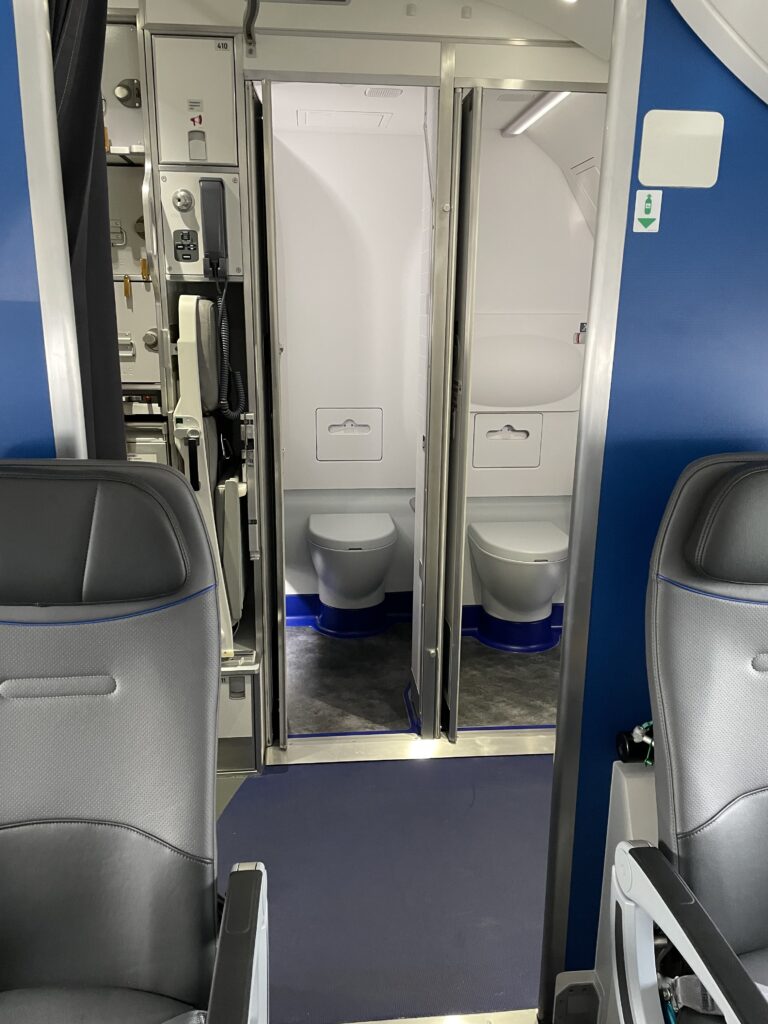The U.S. Department of Transportation has released its final rule governing the size of lavatories on narrowbody aircraft, or those with just one aisle, with the aim to make air travel more accessible.
Under the rule released Wednesday, all newly manufactured narrowbody planes with 125 or more seats would need at least one lavatory that is “large enough to permit a passenger with a disability and attendant, both equivalent in size to a 95th percentile male, to approach, enter, and maneuver.”
Travelers, however, should not expect larger lavatories anytime soon. They are only required on all newly built aircraft 12 years — or from around 2035 — after the rule becomes effective. Airlines will not need to install the new lavatories in aircraft already in service.
“The inability to safely access and use the lavatory on long flights can impact the dignity of passengers with disabilities and deter them from traveling by air, limiting their independence and freedom to travel,” the DOT said in the rule.
The rule, barring further delay, would become effective in 60 days, or around September 24. The DOT has solicited comments on the proposed rule since 2020.

The size of lavatories on narrowbody aircraft have shrunk in recent years. Airlines have embraced denser seating layouts on planes that, in part, are possible by shrinking the size — but not number — of toilets available to passengers. Carriers and manufacturers have insisted that planes remain accessible even as lavatories have shrunk. For example, they have incorporated removable dividers between two adjoining lavatories that, when removed, allows for the creation of a single larger single lavatory for travelers in a wheelchair.
The DOT already requires at least one larger, accessible lavatory on widebody aircraft, or those with two aisles.
The most popular aircraft flying U.S. domestic routes — the Airbus A320 and Boeing 737 families — would be subject to the new rule. Most smaller planes, like the Airbus A220 and Embraer E-Jet family, would not.
Updated to reflect the 12 year implementation timeline, not three years.
Tags: airlines